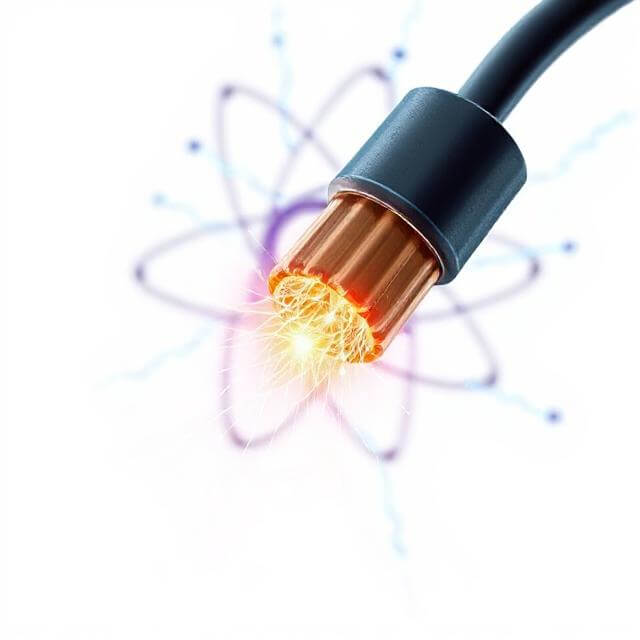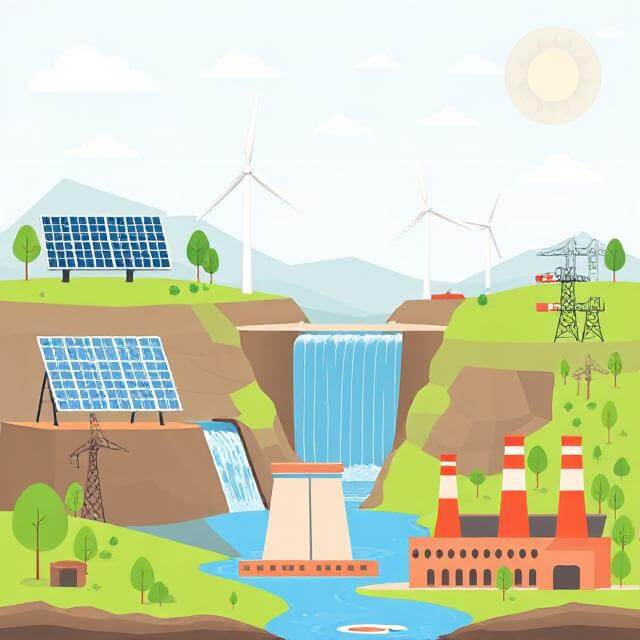🧠 How Exactly Current Flows in Conducting Wires
🔌 Introduction
Electricity is everywhere – in our homes, schools, hospitals, factories, and gadgets. But have you ever stopped and thought: how does current actually flow in a wire? What happens inside that tiny copper wire that turns on your fan, lights, or phone charger?
This guide will take you deep into the science behind current flow in conductors, using easy-to-understand language, real-life analogies, and diagrams (if you choose to add). Whether you’re a student, a curious reader, or a science lover, this article will help you truly understand how electricity works inside a wire.
⚡ 1. What Is Electric Current ?
Electric current is the flow of electric charge. In most cases, this charge is carried by electrons, which are tiny particles inside atoms.
- Unit of Current: Ampere (A)
- Definition: 1 Ampere = 1 Coulomb of charge flowing per second
In wires, these electrons move through conducting materials like copper, aluminum, or silver.
🧲 2. What Are Conductors?
Conductors are materials that allow electric current to flow easily. They have free electrons that move easily when pushed by a voltage.
Common Conductors:
- Copper (used in most wires)
- Aluminum (used in power transmission)
- Silver (best conductor but expensive)
- Gold (used in microchips)
🧬 3. What Are Free Electrons?
In metals, atoms are tightly packed, and each atom donates one or more electrons that are free to move in the metal lattice.
Imagine a box full of people (electrons) who are free to walk in any direction – that’s how free electrons behave in a metal.
🧲 4. How Voltage Creates an Electric Field
When you apply a voltage to a wire, it creates an electric field inside the wire. This field pushes free electrons to move in a specific direction.
Without voltage, electrons move randomly (like people walking in all directions). But when voltage is applied, they start drifting in one direction – this is called electric current.
🚶♂️ 5. What Is Drift Velocity?
Though electrons move randomly at very high speeds, their average speed in one direction is called drift velocity.
- Drift velocity is very slow (in mm/sec)
- But the electric field spreads at almost the speed of light, so the effect is instant
Analogy:
Imagine a long pipe filled with marbles. Push a marble at one end – a marble pops out instantly at the other end. Electrons work similarly.
💡 6. Why Current Appears Instantly?
When you switch on a light, it glows instantly. But how?
Because electrons throughout the wire start moving together due to the electric field, even though each electron moves slowly.
The message (electric field) moves fast – almost like pushing water in a filled pipe.
⚙️ 7. Resistance: The Opposer of Flow
As electrons move, they bump into atoms in the wire. These collisions slow them down – this is called resistance.
- Resistance Symbol: R
- Unit: Ohm (Ω)
- Formula: R=ρ×LAR = \rho \times \frac{L}{A}R=ρ×AL
Where:
- ρ = resistivity (material property)
- L = length of wire
- A = area (thickness of wire)
More resistance = less current.
📐 8. Ohm’s Law: Relationship Between V, I, R
One of the most important laws in electricity is:
Ohm’s Law:
V= IR
Where:
- V = Voltage (Volts)
- I = Current (Amperes)
- R = Resistance (Ohms)
If resistance increases, current decreases (if voltage is same).
🔥 9. Heat Production in Wires
When electrons collide with atoms, energy is lost in the form of heat.
That’s why:
- Bulbs heat up
- Chargers get warm
- Electric stoves cook food
This heat is calculated by: Heat=I2×R×t\text{Heat} = I^2 \times R \times tHeat=I2×R×t
Where t = time
🔁 10. Types of Current: AC vs DC
DC (Direct Current):
- Flows in one direction
- Comes from batteries, solar cells
- Used in phones, laptops
AC (Alternating Current):
- Flows in both directions
- Changes direction 50 times per second (50Hz in India)
- Comes from power plants
- Used in homes and factories
🧪 11. Factors Affecting Current Flow
Here’s what changes the amount of current in a wire:
| Factor | Effect on Current |
|---|---|
| Wire Material | Better conductor = More current |
| Wire Thickness | Thicker = Less resistance |
| Wire Length | Longer = More resistance |
| Temperature | Higher temp = More resistance |
🌐 12. Real-Life Example: Fan Circuit
When you switch on a fan:
- Voltage from power supply creates electric field
- Electrons inside copper wire start drifting
- Current reaches the fan motor
- Motor converts electric energy to mechanical energy
- Fan starts spinning!
All this happens in less than a second!
⚛️ 13. Do Electrons Travel from Positive to Negative?
Actually, electrons move from negative to positive, because they are negatively charged.
But for calculation, we use conventional current direction, which is positive to negative.
Don’t get confused – both are correct depending on the context.
🔄 14. Current Flow in Circuits
A complete loop is needed for current to flow:
Battery + Wire + Load + Wire Back = Circuit
If the loop is broken (open switch), current stops.
🧠 15. Quantum View: Why Electrons Move?
At the quantum level, electrons move because:
- They are repelled by negative terminal
- They are attracted to the positive terminal
- The potential difference creates a force on them
This force causes drift velocity and current.
🎓 16. Summary
- Current = flow of electric charge (mostly electrons)
- Conductors have free electrons
- Voltage creates electric field → electrons drift
- Current appears instantly due to fast field propagation
- Resistance slows electrons and produces heat
- Ohm’s Law connects voltage, current, and resistance
- AC and DC are two types of current
✅ Conclusion
Understanding current flow helps us appreciate how our modern world works. From simple wires in your charger to complex circuits in satellites – the movement of tiny electrons powers it all.
❓ Top FAQs
❓ How does electric current flow in a wire?
Electric current flows when free electrons in a conductor move in response to an electric field created by a voltage source.
❓ What causes electrons to move in a conductor?
Voltage creates an electric field that pushes free electrons to drift in one direction, resulting in current.
❓ Why do we feel current instantly when we switch on a device?
Because the electric field travels at nearly the speed of light and pushes all electrons in the circuit simultaneously.
❓ What is the role of resistance in current flow?
Resistance slows down electron movement due to collisions with atoms, converting some energy into heat.







